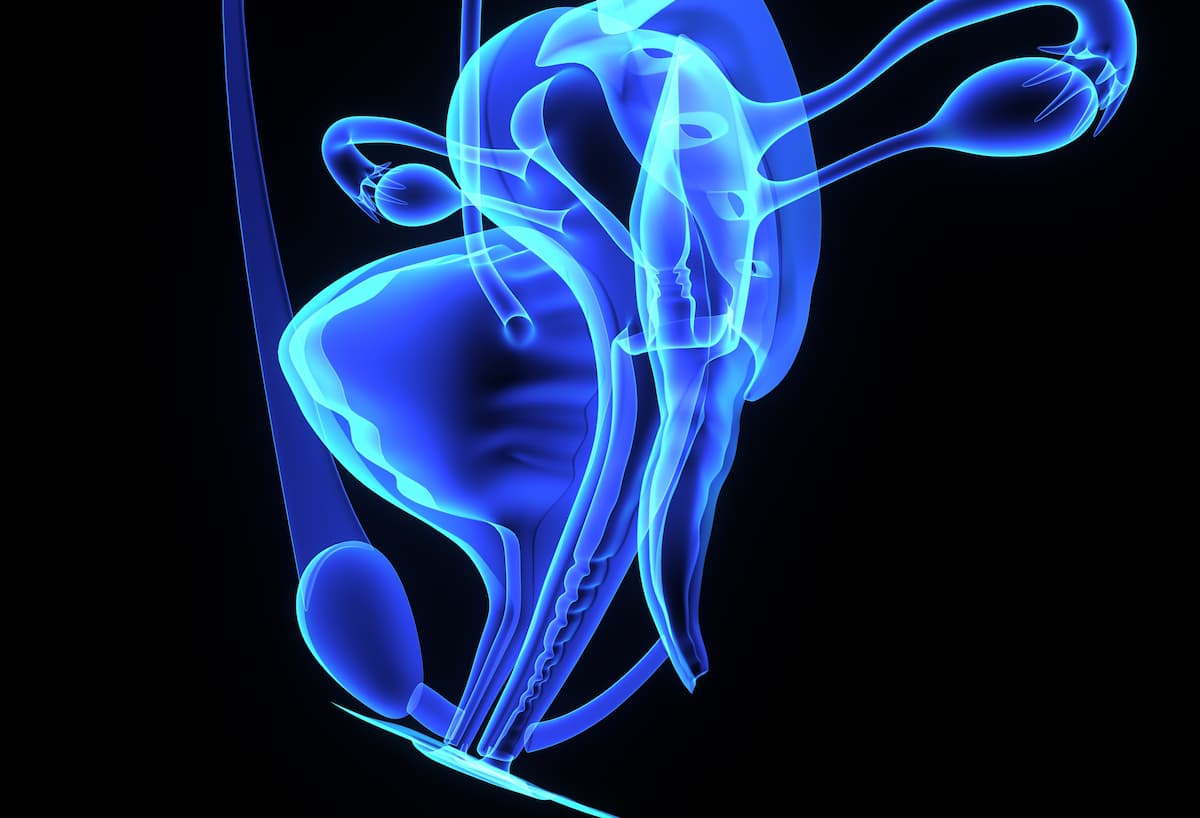Induction Chemotherapy Combination Boosts PFS/OS in Cervical Cancer
Data from the INTERLACE trial shows induction chemotherapy followed by chemoradiotherapy prolongs overall survival in locally advanced cervical cancer.
Data from the INTERLACE trial shows induction chemotherapy followed by chemoradiotherapy prolongs overall survival in locally advanced cervical cancer.

Findings from the phase 3 INTERLACE trial (NCT01566240) showed that short-course induction chemotherapy followed by chemoradiotherapy significantly improved the survival of patients with locally advanced cervical cancer.
The 3-year progression-free survival (PFS) rate for the induction chemotherapy with chemoradiotherapy group was 75%, and for the chemoradiotherapy alone group, it was 72%. The 5-year PFS rates were 72% and 64%, respectively, with a median follow-up of 67 months (HR, 0.65; 95% CI, 0.46-0.9; P = .013). For 3-year overall survival (OS), induction chemotherapy with chemoradiotherapy yielded a rate of 85% compared with 80% using chemoradiotherapy alone. At 5 years, the OS rates were 80% and 72%, respectively (HR, 0.60; 95% CI, 0.40-0.91; P = .015).
OS results were based upon 114 deaths, 59% of the trial’s estimation of at least 192 deaths. A smaller number of deaths occurred due to disease progression, which included 42 deaths in the induction chemotherapy with chemoradiotherapy group and 52 deaths in the chemoradiotherapy alone group.
“This short-course induction chemotherapy regimen followed within 7 days by chemoradiotherapy improves survival of patients with locally advanced cervical cancer,” the authors of the study wrote on the treatment. “It should now be considered a standard of care and be included in the design of future trials that explore the incorporation of new agents for the treatment of locally advanced cervical cancer.”
To be eligible for enrollment, patients needed to have stage IB1 disease with nodal involvement or stage IB2, IIA, IIB, IIIB, or IVA disease; be fit for radical treatment; have squamous, adenocarcinoma, or adenosquamous histology; and have no positive lymph nodes above the aortic bifurcation.
Of the 500 enrolled patients, 250 were placed in a group that received induction chemotherapy followed by chemoradiotherapy, and 250 were placed in a group that received only chemoradiotherapy. These patients were randomly assigned to each group.
For both groups, chemoradiotherapy was an external beam radiation therapy (EBRT) dose of 40.0 to 50.4 Gy in 20 to 28 fractions, with weekly cisplatin at 40 mg/m2 for 5 weeks and brachytherapy. The regimen for the induction chemotherapy was carboplatin area under the receiver operator curve 2 and paclitaxel at 80 mg/m2 weekly for 6 weeks followed by chemoradiotherapy beginning on week 7. Overall radiation treatment time was 50 days maximum, with exceptions allowed for up to 56 days per Trial Management Group approval.
Regarding adherence to induction chemotherapy, 230 (92%) patients completed 5 weeks, and 211 (84%) completed 6 weeks. Neutropenia, hypersensitivity reactions, patient or clinical decisions, renal toxicity, and withdrawal were listed as reasons for not completing all 6 cycles.
Adherence to chemoradiotherapy was high for both groups, 212 (85%) patients in the induction chemotherapy group and 224 (90%) patients in the chemoradiotherapy alone group received 4 cycles of cisplatin. Additionally, 169 (68%) and 197 (79%) completed 5 cycles, respectively.
The time interval from induction chemotherapy to chemoradiotherapy was 7 days or shorter for 78% of patients and 14 days or fewer for 93%. There was no difference in results between patients who started in 7 days or less or 14 days or less.
Primary endpoints of the trial were OS and investigator-assessed PFS. Secondary end points were adverse events (AEs), pattern of first relapse, health-related quality of life (QOL), and time to next anticancer therapy.
Grade 3/4 AEs occurred in 147 (59%) patients in the induction chemotherapy with chemoradiotherapy group and 120 (48%) patients in the chemoradiotherapy alone group. Grade 3/4 hematological AEs were more common for patients in the chemotherapy with chemoradiotherapy group; 30% vs. 13%, respectively. Anemia of grade 2 or higher was found in 28% and 17%, respectively. Neutropenia was the most frequent AE during the induction phase (7%).
Additional AEs in the chemotherapy with chemoradiotherapy group included anemia, infection, hair loss, peripheral neuropathy, fatigue, constipation, and dyspnea. Within 30 days of completed treatment, there were 3 deaths, including 1 to respiratory failure in the chemotherapy with chemoradiotherapy group and 2 to sepsis and pulmonary embolism in the chemoradiotherapy alone group. None were judged to be treatment-related.
QOL was slightly lower in the chemotherapy with chemoradiotherapy group during the induction chemotherapy treatment, and time to next anticancer therapy was improved in the chemotherapy with chemoradiotherapy group.
The researchers emphasized the need for further studies that investigate the possibility of a combination approach in locally advanced cervical cancer.
Reference
McCormack M, Eminowicz G, Gallardo D, et al. Induction chemotherapy followed by standard chemoradiotherapy versus standard chemoradiotherapy alone in patients with locally advanced cervical cancer (GCIG INTERLACE): an international, multicentre, randomised phase 3 trial. Lancet. 2024;404(10462):1525-1535. doi:10.1016/S0140-6736(24)01438-7